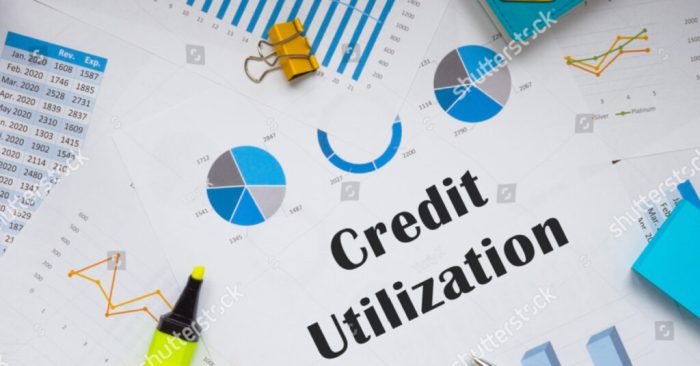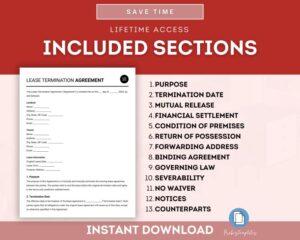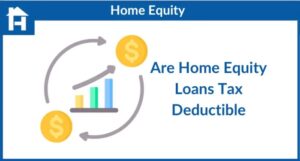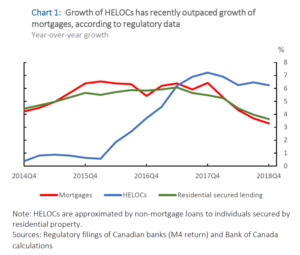
Welcome to the whimsical world of credit utilization tips! Think of it as a treasure map leading you to the golden chest of financial sanity. Just imagine a life where your credit score is as high as your aspirations, and your wallet isn’t screaming for mercy. Buckle up as we unveil strategies that will make your credit utilization ratio dance with joy!
In this delightful journey, we’ll explore effective methods to improve your credit utilization rates, how to keep that ratio low, and the importance of monitoring it like a hawk. Plus, we’ll sprinkle in some wisdom about credit counseling and sprinkle it further with debt management techniques that would make even a money wizard proud!
Credit Utilization Strategies

When it comes to credit scores, credit utilization is like that one friend who keeps borrowing your stuff but never returns it—crucial to your score, yet often overlooked. Maintaining a healthy credit utilization rate can significantly boost your credit score, and isn’t that what we all want? Let’s dive into effective methods to keep that ratio lower than a limbo stick at a party!
Methods to Improve Credit Utilization Rates
Improving your credit utilization is akin to putting on a superhero cape—your credit score will thank you! The key to a healthy credit utilization rate is keeping your balances low relative to your available credit. Here are some strategies that will have your credit score soaring faster than a jet plane:
- Increase Your Credit Limits: If your income or creditworthiness has improved, don’t be shy! Ask your credit card issuer for a limit increase. Just remember, it’s for your credit score, not for a shopping spree!
- Pay Off Balances Early: Why wait till the end of the month? Paying off your balance before the statement closes can keep your reported utilization low. It’s like finishing your homework before the weekend—more time for fun!
- Use Multiple Cards: Spread the love! If you have several credit cards, use them strategically. This way, you’ll keep individual card utilizations low. It’s like sharing a dessert—everyone gets a taste without overindulging!
- Set Up Alerts: Use your bank’s app to set alerts for when you’re nearing your credit limit. This friendly reminder is like a personal trainer for your finances—keeping you on track!
- Limit New Applications: Each new credit application can temporarily lower your score. So, take it easy on the applications. Think of it like dating—quality over quantity!
Maintaining a Low Credit Utilization Ratio
Keeping your credit utilization low is more than just a one-time effort; it’s a lifestyle! Here’s how to maintain that enviably low ratio consistently:
- Monitor Regularly: Keeping an eye on your credit report is essential. Use free services to check your report, like a fitness tracker for your credit health. You wouldn’t skip monitoring your steps, right?
- Budget Wisely: Create a budget that accounts for your monthly expenses and stick to it. This will help you manage your spending and ensure you don’t max out your cards. Think of it as meal prepping for your finances!
- Utilize Rewards Wisely: If you have rewards cards, use them for regular expenses, but pay them off immediately. It’s like having your cake and eating it too, but without the calories!
- Emergency Fund: Building an emergency fund can prevent you from relying on credit cards in times of need. Consider it your financial safety net—always there to catch you when life throws a curveball!
Monitoring Credit Utilization Over Time
The secret to credit success is not just in maintaining the present but monitoring your progress over time. Here’s how to stay informed:
- Credit Monitoring Services: Enroll in services that provide real-time updates about your credit score and utilization. It’s like having a personal assistant for your credit—minus the coffee runs!
- Check for Errors: Regularly review your credit report for inaccuracies. Mistakes happen, and you don’t want a clerical error affecting your score. It’s like checking your online shopping cart before hitting “checkout”—don’t get surprised!
- Annual Credit Report: Take advantage of your right to a free annual credit report from each of the major bureaus. This is like a yearly physical for your credit health—who wouldn’t want that?
- Track Changes: Keep notes on how your credit utilization changes over time. This can help you identify patterns and adjust your spending habits. It’s like tracking your workout progress—celebrate those gains!
“Keeping your credit utilization low is not just a good practice—it’s your ticket to a higher credit score!”
Understanding Credit Counseling

Credit counseling is like having a GPS for your financial journey—helping you navigate through the often-treacherous terrain of credit utilization without veering off course. With the right guidance, you can avoid financial potholes and speed bumps that may come your way. But what exactly does credit counseling entail, and how can it benefit you in managing your credit utilization? Buckle up as we take a deeper dive into this financial aide!Credit counseling plays a crucial role in helping individuals manage their credit utilization effectively.
Think of credit counselors as the wise sages of the financial world. They analyze your financial situation, offer personalized advice, and develop a strategic plan tailored to your unique needs. By helping you understand your spending habits and offering practical strategies, credit counseling can promote healthier credit utilization, ultimately enhancing your credit score.
Steps to Find Reputable Credit Counseling Services
Finding a reliable credit counseling service is essential for effective credit management. Here are the steps to ensure you hitch your wagon to a trustworthy star:
1. Research Nonprofit Organizations
Look for nonprofit credit counseling agencies that are well-established and have a positive reputation. They’re typically more reliable than for-profit counterparts.
2. Check Accreditation
Ensure that the agency is accredited by a reputable organization, like the National Foundation for Credit Counseling (NFCC) or the Association of Independent Consumer Credit Counseling Agencies (AICCCA).
3. Read Reviews and Testimonials
Scour the internet for customer reviews or testimonials. A few glowing reviews will make your heart sing, but read a few bad reviews too—it’s all part of the process!
4. Verify Credentials
Confirm that the counselors are certified and trained. You wouldn’t want to take health advice from someone who’s only watched medical dramas!
5. Ask About Fees
Many services offer free consultations, but be aware of potential fees. Transparency is key—if they’re dodging the question, run like the wind!
6. Schedule a Consultation
Most reputable agencies will offer a free initial consultation. This is your chance to gauge their expertise and see if their advice suits your needs.
Common Misconceptions About Credit Counseling
Credit counseling is often surrounded by myths and misconceptions that can deter individuals from seeking help. Here’s a list of common misunderstandings that need to be debunked:
Credit Counseling is Only for People in Debt
While it’s beneficial for those in debt, anyone can benefit from credit counseling—think of it as a financial tune-up!
Credit Counseling Will Hurt Your Credit Score
In fact, seeking credit counseling does not negatively impact your credit score. It’s the actions you take afterward that matter!
All Credit Counselors Are the Same
Just like coffee, not all credit counselors brew the same. Their qualifications, services, and approaches can vary widely.
Credit Counseling is a One-Time Thing
It’s not just a single appointment; think of it as establishing a long-term support system for your financial health.
You’ll Lose Your Credit Cards
Not true! Credit counseling doesn’t require you to close your credit accounts. It focuses on managing what you have effectively.
Credit Counseling is Free of Charge
While many services offer free initial consultations, some may charge fees depending on the program. Always clarify beforehand.
“Credit counseling can be your compass in the stormy seas of credit management—just ensure you’re navigating with a reputable crew!”
Debt Management Techniques
Managing debt can be like trying to juggle flaming swords while riding a unicycle—tricky, nerve-wracking, and likely to lead to a few singed eyebrows. But fear not, brave financial warriors! With the right techniques, you can turn your debt struggles into a well-orchestrated ballet of financial finesse. Let’s explore the art of debt management and how to tame those towering balances into manageable payments.
Debt Consolidation Procedures
Consolidating debt is akin to putting all your eggs in one basket—but it’s a basket that actually reduces your chances of breaking them! This approach can simplify your financial life by combining multiple debts into a single payment, often at a lower interest rate. Here are effective procedures for consolidating your debt:
- Personal Loans: Consider taking out a personal loan with a lower interest rate to pay off high-interest debts. It’s like swapping a pair of heavy boots for a pair of snazzy sneakers—much easier to run with!
- Balance Transfer Credit Cards: Some credit cards offer 0% APR on balance transfers for a limited time. This is your golden ticket—just make sure to pay off the balance before the clock runs out!
- Home Equity Loans: If you own a home, tapping into your home equity can provide funds to consolidate debts at lower rates. Just don’t turn your castle into a financial dungeon!
- Debt Management Plans: Work with a credit counseling service to create a tailored plan that consolidates your debts into one monthly payment. Think of it as hiring a personal trainer for your finances—only with less sweat!
Prioritizing Debt Payments
When it comes to debt, not all bills are created equal. Some debts are like that pesky mosquito buzzing around your head, while others are more like a friendly puppy waiting for belly rubs. Prioritizing your payments can help minimize stress and maximize efficiency. Here’s a detailed plan to help you tackle your debts:
- List Your Debts: Write down all your debts, including amounts and interest rates, so you can see the full picture. It’s like gathering the ducks before you line them up!
- Focus on High-Interest Debts: Pay off debts with the highest interest rates first, as they cost you the most over time. This is your financial fire extinguisher—snuff out the flames before they spread!
- The Snowball Method: Alternatively, pay off the smallest debts first to gain momentum. It’s like pushing a snowball downhill; it gathers mass and speed, making the process feel less daunting!
- Set Up Automatic Payments: Automate your payments to avoid late fees and keep everything organized. Think of it as setting your financial GPS to keep you on the right path!
Negotiating with Creditors
Negotiating with creditors can feel like trying to convince a cat to take a bath—daunting but so worth it when it’s successful! Here are some tips for negotiating better terms in debt management:
- Be Honest: Start by explaining your financial situation candidly. Most creditors will appreciate your transparency and may offer options to ease your burden.
- Know Your Rights: Familiarize yourself with consumer protection laws. Knowledge is power, and it gives you the upper hand in negotiations!
- Propose a Payment Plan: Suggest a realistic payment plan based on your budget. Your creditors may be more amenable if they see you’re making an effort!
- Ask for Lower Interest Rates: Don’t hesitate to ask for a lower interest rate, especially if you have a good payment history. It’s like negotiating a better deal on your next car—sometimes, all you need to do is ask!
“The greatest financial mistake is not to make a financial mistake at all.” – Unknown
Summary
And there you have it, a dazzling array of credit utilization tips that promise to turn your financial frown upside down! Remember, maintaining a low credit utilization ratio is like keeping your diet in check – it requires consistent effort, but the results are oh-so-sweet! So go forth, conquer that credit landscape, and let your credit score shine brighter than a disco ball at a 70s party!
Quick FAQs
What is credit utilization?
Credit utilization is the ratio of your current credit card balances to your total available credit, expressed as a percentage. It’s a key factor in determining your credit score.
How can I improve my credit utilization ratio?
You can improve it by paying down existing debt, increasing your credit limits, and avoiding new purchases until you lower your balances.
What’s a good credit utilization ratio?
A good rule of thumb is to keep your credit utilization below 30% of your total available credit for optimal credit score health.
How often should I check my credit utilization?
It’s wise to check your credit utilization at least once a month, especially before applying for new credit, to ensure you’re on track.
Can closing a credit account affect my utilization?
Yes! Closing a credit account can decrease your total available credit and potentially increase your utilization ratio, which may negatively impact your credit score.






